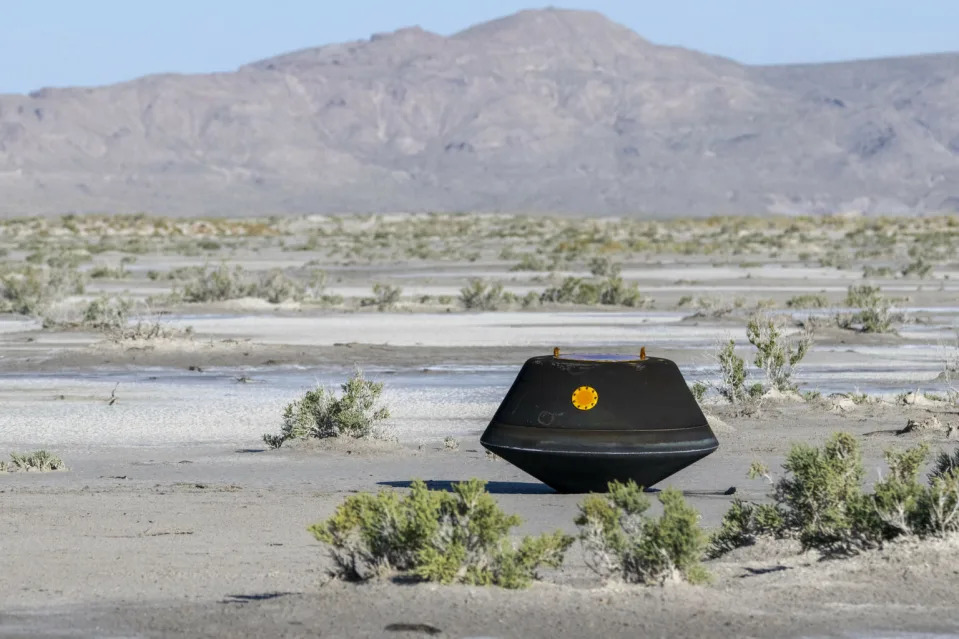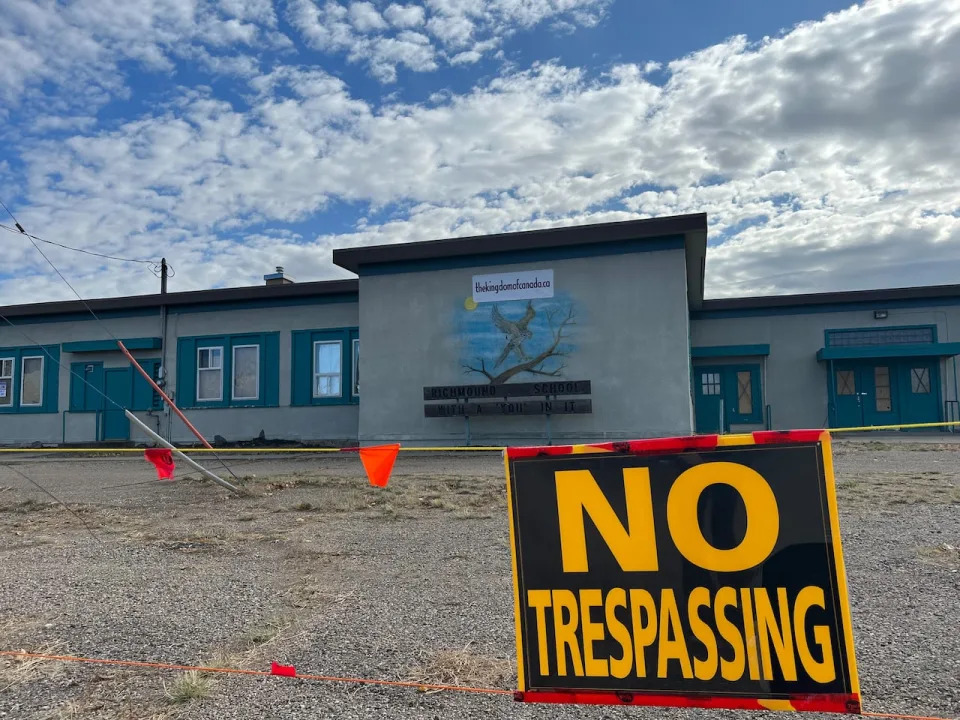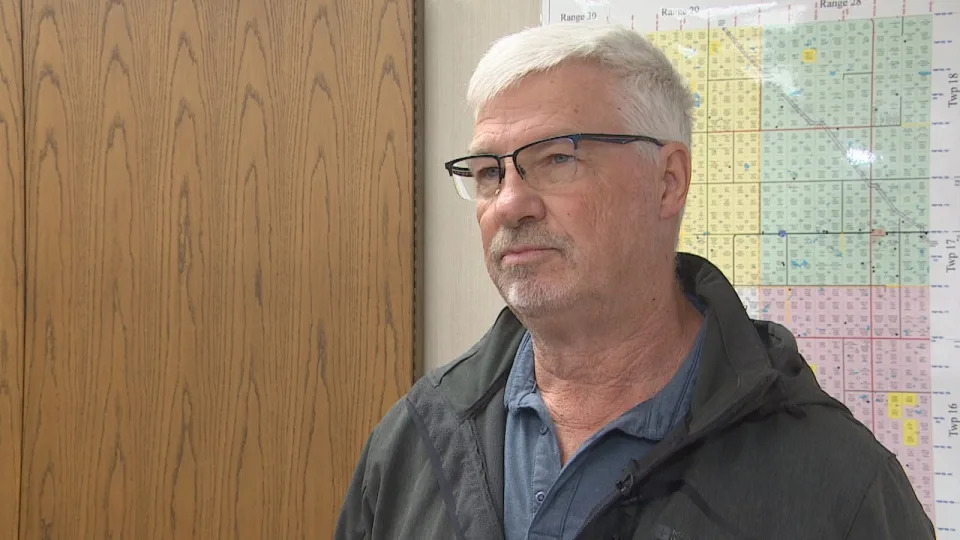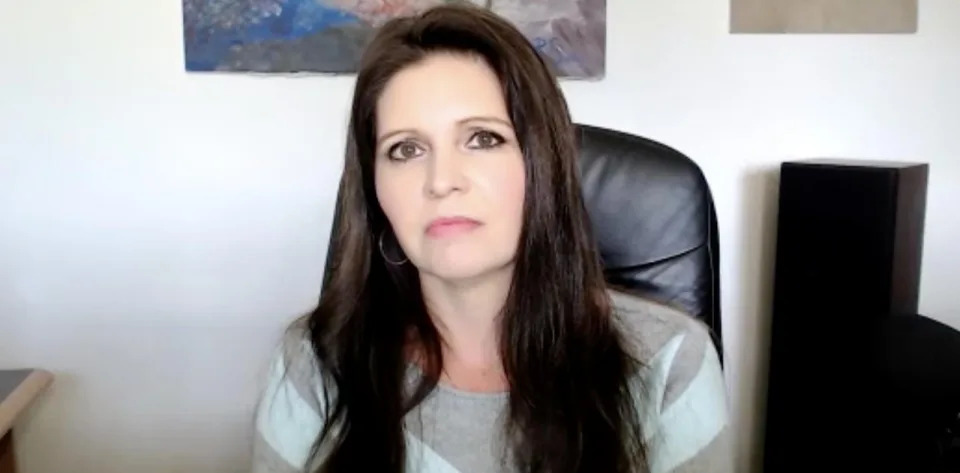Elle Reeve and Samantha Guff, CNN
Fri, October 6, 2023
Now that books are being banned and disappearing from school libraries, students and parents are showing up to school board meetings in Florida to argue for access to books that take on difficult subjects. But they are losing out to a new state law that makes it easier for opponents to get books off shelves.
The conservative Moms for Liberty and allied groups turned board meetings into spectacle, reading out explicit passages from books without context to argue that they should not be available to minors. This summer, a Florida law went into effect stating that if a board member stopped a reading because it was offensive, the book could be removed immediately.
It turned performance into policy. Some school board lawyers are confused by the rules, and and those arguing for access have few ways to fight back.
“Adults who are doing this clearly don’t understand teenagers,” Trixie Meckley, a senior in high school in DeLand, central Florida, told CNN. When she’d heard about one of the books most frequently banned from school libraries, “Gender Queer: A Memoir,” she’d searched the graphic novel on Google to see what the fuss was about. “It honestly looks pretty interesting,” she said.
Meckley’s friend, junior Riley Kellogg, has been an obsessive reader since middle school. “I actually have a sticker on my phone right now that says, ‘If you ban a book, I add it to my summer reads list,’” Kellogg said.
Children and their parents with means can certainly still access the works in bookstores or other libraries if they know about them.
According to a PEN America study, more than 40% of book bans nationwide last school year happened in school districts in Florida.
Moms for Liberty chapters have a plan of action to offer to supporters.
“You want to get shut down. Only read the dirtiest bits that we give to you,” a Moms for Liberty member north of Orlando in Seminole County urged viewers in a Facebook video.
But in Seminole County itself, the school board just let them read the dirty bits without stopping them – which could have triggered the ban.
They had more success south of Orlando, in Indian River County, where Moms for Liberty and likeminded allies got dozens of books removed.
And in Volusia County, a neighbor of Seminole, a school board meeting took on the atmosphere of a professional wrestling match: Everyone knows what’s going to happen, but they all want to watch anyway. The Moms for Liberty knew they’d be reading sex scenes, the people who showed up to oppose them knew they’d be reading sex scenes and the school board knew they’d be reading sex scenes. But for the spectacle to matter, a school board member had to declare the words were inappropriate for the crowd who came to hear them.
Merrick Brunker, who’s running for a school board seat, stood at the podium and addressed the board: “And then suddenly Matt was inside her, pumping so hard that she scooted backward on the carpet, burning the backs of her legs…” He was reading from “Nineteen Minutes,” a novel by Jodi Picoult about the aftermath of a school shooting that was a best-seller in 2007. “‘Wait,’ Josie said, trying to roll away beneath him, but he clamped his hand over her mouth and drove harder and harder until Josie felt him come.”
“Point of order,” a school board member said.
“Semen, stick–” Brunker continued.
“Please stop,” the member said.
Brunker threw up his hands.
Kellogg, the high school junior, also spoke at that meeting. “I have learned a lot more about the world around me through books than I have through my own eyes,” she said. “Although there might be something in a book that some people don’t want there to be, the books ultimately have a message. … They should stay in the libraries.”
Jacob Smith, who said he graduated from a county school in 2017, also addressed the board.
“I’m actually Gen Z … and we have certain feelings about how we want to be educated,” Smith said.
His father had read banned books decades ago, he added. “I don’t want to continue fighting the same things we were fighting from the previous generations … I want Gen Z to be a generation of people that find new peace, find new justice that America has never achieved before.”
“I think it’s ridiculous that we’re going back in time,” Smith said.
Florida’s new state law, HB 1069, came into effect in July. It followed lobbying from groups who were unhappy that books they complained about, including classics like “Slaughterhouse-Five” and “The Bluest Eye,” often stayed on shelves after they were read in their entirety by a committee of parents, school officials and a librarian and deemed appropriate.
“There was what I call a loophole in the statute that said the material needed to be taken as a whole, and if it had any literary value then it could stay,” Jenifer Kelly, chair of Moms for Liberty in Volusia County, told CNN. “However, I think of the analogy – if you have something poisonous inside a brownie, and you know it’s there, are you going to take a bite of that brownie? No.”
She said she was not interested in the views of students. “If they’re 17 or younger? No. It’s their parents’ decision.”
In Indian River County, at the first school board meeting after a session of many sex scene readings, Michael Marsh was angry. A parent with a book complaint could have gone to the school principal, he said. Instead, “they chose to bring the theater here and for the circus to happen here,” he said.
It’s not that he liked every single book that Moms for Liberty had targeted, he added. But the tactics were not OK, he said, wearing a T-shirt in the style of Moms for Liberty that read “Mike for Liberty” with the tagline, “Your parental rights do not stop mine.” On the back of the shirt was a photo of his daughters. “I’m the proud parent of two beautiful interracial queens,” he said.
“They are not the majority. They are bullies,” Marsh said of Moms for Liberty. “This is what happens when no one runs and everyone’s asleep. Well, you know what, I’m wide awake – or ‘woke,’ which is the bad word of the day.”
Of school board members who were aligned with Moms for Liberty, he said, “We’ve got to vote them out. We have to continue to educate, not just parents, educate staff. And we can’t have people in fear anymore.”
Any change via the polls will take time, and those who’ve been fighting against book removals are already tired, explained Julie Miller, a former Clay County media specialist – the modern term for a librarian. She has been an outspoken critic of book bans, watching the phenomenon grow since November 2021, when she received an objection to “All Boys Aren’t Blue.”
At first, she thought there could be compromise and understanding. There were some books marketed like young adult novels but really meant for readers in their early 20s and contained vivid sex scenes. The school didn’t need to offer those. But eventually, targeted books included prize-winning classics like “Slaughterhouse-Five,” “The Bluest Eye,” “To Kill a Mockingbird,” and so on. She says she was given a lateral job move in June and decided to leave Clay County Schools.
“There is no fight right now – not in this state – there is no fight that we can win. Because it’s not just us vs. Moms for Liberty” and allied groups, she said. “It’s us versus them, and the school board members that they have successfully gotten elected, and the legislators who have written these draconian but also vague laws that that are so one-sided, and unbeatable.”
“There’s a lot of hopelessness,” Miller said.
What's behind the national surge in book bans? A low-tech website tied to Moms for Liberty
Will Carless, Chris Ullery and Alia Wong, USA TODAY
Thu, October 5, 2023 at 3:30 AM MDT·18 min read
In August 2022, a local parent sent the Clay County School District in Florida eight official Requests for Reconsideration or Review of Instructional Materials, commonly known as “book ban” requests.
On each form, where the district asked what was objectionable about the material, Adam Gilhousen wrote “see attached paperwork.” He then attached book reviews for each title, including Margaret Atwood’s “The Handmaid’s Tale,” (“profanity; violence; sexual activities: Not for minors”) Sara Gruen’s “Water for Elephants” (“sexual activities; profanity: Not for Minors”) and Alice Sebold’s “The Lovely Bones” (“mild profanity; alternate sexualities: Not for Minors.”)
About 1,500 miles north in Maine, parents and activists were busy throughout 2022 pressing school districts to ban books. One group called Save Our Schools approached their district with a list of 95 books they wanted reviewed. At a school board meeting, parents handed out a packet to staff with instructions for how to check their research. It included a rubric, rating books from zero (“for everyone”) to five (“aberrant content”).
These so-called challenges appeared to begin locally, with no obvious connections. But they shared a common thread: The book review material submitted by local parents was not written by those parents.
Instead, it was taken word for word from a website called BookLooks.org.
The site launched in 2022 to showcase a book-rating system that has also been used by right-wing political activist group Moms for Liberty. It bills itself as a resource for parents, and claims not to be pushing political action: ”We do not support ‘banning’ books,” the site says.
In less than two years, BookLooks has become the go-to resource for anyone seeking to ban books – especially books about gay people or sexuality – from school and public libraries, according to researchers, library experts and a USA TODAY analysis of book-ban attempts nationwide.
Across at least a dozen states, USA TODAY found attempts to remove hundreds of book titles that directly cited BookLooks reviews.

Those attempts ranged from individual parents filing challenges to remove a handful of specific books, up to statewide legislation requiring that books be rated and recalled from schools. In all those cases, the parents, activists or lawmakers produced BookLooks’ text, or simply listed links to the website, as their rationale.
BookLooks is “not trying to tell you, ‘don't buy this book’ and ‘buy that book,’” said Cynthia Walsh, who promotes using the site and is running for a school board seat in Fairfax County, Virginia. It’s telling you: “Here's a list of books, go find them.”

It’s impossible to know how many book-ban attempts have been inspired by BookLooks, which adds new reviews weekly. But in one researcher’s national database tallying more than 3,000 challenges to library books during 2022-23, a USA TODAY analysis found at least 1,900 were for titles that appear on BookLooks.org.
According to PEN America, a non-profit organization that champions freedom of speech, the nation’s 11 most-challenged books are also all found on BookLooks.
And it’s not just individual book challenges citing BookLooks. In Virginia, one school district has adopted the site as an official reference tool for vetting its library books. In Texas, a legislator pushed to pass a new law requiring book dealers to rate and recall books by referencing an “unsuitable booklist” sourced mostly from BookLooks.
Yet all these examples likely represent only a sliver of the impact BookLooks has had on the national surge in book-banning efforts in the past two years. Last school year saw an unprecedented 3,362 instances of books being banned, restricted or access-limited, up 33% from the 2021-2022 school year, according to PEN America.
“What this says to me is that people don't trust the expertise of librarians — they say, this random website knows better than you do, even though you have schooling and this is your profession,” said Emily Knox, an associate professor who studies intellectual freedom and censorship at the University of Illinois Urbana-Champaign. “The real problem is that people try to say, ‘I know what's best for the school system, and for the library, and the library should reflect my own values — no matter what the values are of other people in the community.’”
Week in extremism: Why library, schools are getting bomb threats in one California city
Banning books: Latest front in America’s culture wars
The national explosion in book bans has come with a specific focus on LGBTQ issues and books detailing racism. That corresponds with a rise in public advocacy from conservative and far-right activists.
In recent years, public protests seemed to center on a new theme every few months: The COVID pandemic saw demonstrations against masks and vaccines. Then came a flare-up over the teaching of “critical race theory” in schools. Then parents – often alongside extremist groups like the Proud Boys – started picketing all-age drag shows, decrying performers and those who support them as “groomers and pedophiles.”
As angry parents squared off against counter-protesters outside drag shows or story hours with bullhorns and signs, another group of activists was busy on a different flank of the culture wars: filing paperwork and showing up at local school board meetings.
Stoked by conservative pundits and far-right conspiracy theorists, volunteer groups from California to Iowa to Texas to Florida rallied around a new cause: Banning books that examine sexual or gender identity, or that detail America’s troubling relationship with race.
Parents – or anybody claiming to be troubled by certain books in libraries – could show up and make their case at school board meetings. Or they could file official complaints like those in Maine and Clay County.
But how – out of thousands and thousands of library books – to know which titles to complain about? And how – without reading the books first – to make the case that they were unsuitable for young readers?
That’s where BookLooks comes in.
Launched in March 2022, Booklooks.org is registered to BookLooks.org, LLC, which according to Florida business records is run by Emily and Jonathan Maikisch, a couple from West Melbourne, Florida.
The no-frills webpage bills itself as a resource for parents seeking more information about the books their children might read.
“We are concerned parents who have been frustrated by the lack of resource material for content-based information regarding books accessible to children and young adults,” reads the "about" section.
Emily Maikisch told USA TODAY in an email that she used to be a member of Moms for Liberty, the controversial organization that was recently listed as an extremist group by the Southern Poverty Law Center. Maikisch declined USA TODAY’s interview requests but said in an email that she left Moms for Liberty in March 2022 to launch BookLooks. The website says it has no affiliation with Moms for Liberty.
An examination of its history calls this into question.

On March 25, 2022, someone registered the domain name “BookLooks.org.” The next day, March 26, the Brevard County, Florida, chapter of Moms for Liberty posted a graphic showing a ratings system for books from zero to five.
“ROCKSTAR VOLUNTEERS:” the post reads. “We would like to give a shout out to our amazing Book Review Committee for developing such a detailed and professional system for reviewing and rating books found in our school libraries.”
Maikisch, on her Facebook account, even replied in support of the Moms for Liberty post at the time.
The same ratings graphic, with only slight alterations, is now used on BookLooks.org.
When asked by USA TODAY about the Moms for Liberty post, Maikisch said she used to be part of the group’s book review committee, but that she left to create her own website. She said Moms for Liberty had copied her graphic and assigned their own ratings without acknowledging that Maikisch and her husband created it, and said she had allowed the group to use BookLooks' reports, but later stopped interacting with the group.
The Brevard County Moms for Liberty group did not reply to a request for comment.
The first snapshot from BookLooks.org on the Wayback Machine internet archive is from April 15, 2022, and shows the website hasn’t changed significantly in the 18 months since its launch. But what started as a small collection of book reviews has grown into a 630-plus-book database with downloadable reviews that seem tailor-made for filing challenges.
Tasslyn Magnusson, a consultant with PEN America who researches censorship attempts in schools and built the leading national database of book-ban attempts, began seeing references last year to BookLooks.
“It’s fast becoming the preeminent resource,” for people making the case to remove books from school libraries, Magnusson said.
How BookLooks reviews are constructed
BookLooks rates each title based on what it calls the appropriateness of its content for children and young adults. The ratings are modeled on those used by the Motion Picture Association of America, Maikisch said, and are meant to provide “a quick guide for busy parents” to determine if a book has “objectionable” material – mainly profanity, nudity or sexual content.
A zero rating means the book is appropriate for all ages in the view of BookLooks’ reviewers. A one rating means it could contain “mild violence” or “inexplicit” references to sexuality or “gender ideologies,” examples of which include sentences like “Jake and Bob are gay and married to each other,” or “John was born a boy but feels like a girl.”
If the hypothetical Jake and Bob are described as being sexually attracted to each other, or if the book contains a reference to gender-affirming care, then the book is moved up to the next rating level.
Books rated two contain content that “may not be appropriate for children under 13,” according to BookLooks. As of early September, a little more than half of the titles found on BookLooks were rated between zero and two. As of September, 24 had the most extreme possible rating, a five for their “aberrant content.”
Often, the books include a brief plot summary, but almost 250 books don’t include any plot summary at all. Every title on BookLooks includes a numerical rating and a list of “objectionable” material.
There’s scant information on BookLooks.org about how, exactly, each book was assessed. In an email exchange, Maikisch told USA TODAY a member of her “group” reads the book and creates a report with citations.
“The group has a discussion then about how the citations fit within our rating criteria with the original reader providing context where needed. A consensus is reached on what rating to assign,” Maikisch wrote.
The website provides no details about who is making these decisions and what their qualifications are. Maikisch’s name doesn’t appear on the website, nor do the names of anybody else involved in the process.
Maikisch wrote that she and her husband never intended for their website to be used to provide ammunition for banning books from libraries.
“We do not support banning anything from the public sphere,” Maikisch wrote. “That aside, we do support parents who want to have a say in what is made available to their children while under the custodial care of the school.”
Maikisch also acknowledged that the site has become a resource for campaigns to ban books in school and public libraries.
“We aren’t going to try to discourage that, nor do we feel we should have to,” Maikisch wrote. “We support parents using the information we’ve provided however they see fit to make the best decisions for their family.”
But when BookLooks becomes a source in a book ban, it’s not merely a family decision. It’s a decision to impose that judgment on other families. Parents armed with BookLooks reviews, along with activist school boards, are making decisions on books that affect every student and parent in a school or district.
Experts in child literature and censorship say that’s a misguided – and unhelpful – approach.
Book censorship: Experts, librarians disagree with approach
Rating books according to one person, or a group’s subjective moral guidelines, is not how professional librarians assess whether books are suitable for libraries, said Megan Schliesman of the Cooperative Children’s Book Center at the University of Wisconsin-Madison’s School of Education.
Rather, titles often are assessed by consulting with various review journals, and with an analysis based on librarians' knowledge of children's literature and library policies, Schliesman said.
“We’re not approaching it looking for alarms to go off,” said Schliesman, a librarian who’s worked with the center for three decades. “We’re approaching it asking, ‘what does this book have to offer?’”
Rating books, she said, “implies there’s something inherently dangerous or disturbing about certain kinds of content. … That idea that there is this rating system that can set a standard that applies to every family in a community is completely untrue, completely uninformed.”
The librarian reads the book and asks: Does the information or story succeed in meeting children in the designated age group or demographic where they’re at? Books aren’t evaluated based on their topic or a list of do’s and don’ts, Schliesman said.
That’s in stark contrast to the BookLooks approach.
BookLooks reviews usually contain a lengthy list of excerpts from the book, reproduced with no context for where they fit in the broader narrative of the story. Their aim is clear, Magnusson said: to paint a book as fixated with, or defined by, sex, profanity and violence.
“It's very much about just short excerpts – it's not about evaluating the content of the book as a whole,” Magnusson said. “They're talking about all the bad words in it, rather than thinking about the piece of literature.”
Some parents who use BookLooks acknowledge the site is useful as a way to shield their children – and even themselves – from certain ideas.
Walsh, the mom running for school board in Virginia, said she learned about BookLooks at a professional development summit this past spring, geared toward conservative candidates.
“When you talk to the parents, they have no idea,” said Walsh, who’s also spoken out against mask mandates and critical race theory. “They don't know about the book. They don't know what's in the book. And honestly, they're afraid to read it.”
BookLooks, she said, allows them “to get a general idea of why people keep talking about the same books.” She said BookLooks is a great resource to learn about and “look at a book without buying it,” and she now promotes the site while campaigning.
Focused on sexuality
In an email to USA TODAY, Maikisch said BookLooks "does not focus on sexuality nor gender issues."
"They are not major factors at all,” Maikisch wrote.
But every one of BookLooks’ ratings mentions sexuality or sexual activities. The only way for a book to receive a rating of zero from the website is for it to contain “No References to Sexuality, Gender Ideologies or Sexual Activities,” according to a definition on the site. At the other end of the scale, the only way a book receives a rating of four or five from BookLooks is for references to sex or sexuality.
About 40% of the entries on BookLooks include concerns about "alternate gender ideologies" or "alternate sexualities," according to a USA TODAY analysis of all the ratings on the site as of September.
Only 131 of the more than 630 titles that appear on BookLooks do not include “sex” or “gender” in their summary of concerns, those titles including the 54 books BookLooks rated at zero.
Schliesman, the Wisconsin library expert, said BookLooks-style rating systems “are designed with the idea that we have to warn people about certain kinds of content — that there is something inherently dangerous or disturbing about it,” she said. “It stigmatizes readers who want to choose those books – and in some cases, the lives of those who are reflected by the content.”
Knox puts it a slightly different way. The very notion of some books being deemed “acceptable” for children because they reflect certain lifestyles, while others are deemed “unacceptable,” reflects the very biases in society these books aim to challenge, she said.
Knox referenced two of the nation’s most-banned books: “Gender Queer,” by Maia Kobabe, a memoir that describes the author’s exploration of gender identity, and “All Boys Aren’t Blue,” by George M. Johnson, a collection of essays about growing up as a queer Black man in New Jersey and Virginia.
“Those are actually memoirs — they aren't novels — they’re people talking about their own lives,” Knox said. (BookLooks doesn’t indicate whether a book is fictional or not.) “When you say ‘Well, this is a radical agenda,’ it's a way of saying that this person's life is not one that deserves to be told; their experiences are not worthy of being shared with other people and we should only share certain types of stories.”
“I just don’t think that’s what a library is about,” Knox said. “And part of going to school is learning about people who are not like you who think differently from you.”

A recent study, published by a coalition of nonprofits advocating for diverse books, found access to the kinds of titles most targeted in recent challenges can improve kids’ outcomes. When children can see themselves in books, the study suggests, they collectively read at least four more hours a week and see a boost to their grades of at least 3 percentage points compared with the nationally expected average.
Schliesman stressed the importance of ensuring parents have a say in what their own children read. It’s essential “that we respect where people are coming from, that they’re coming from this very genuine place of concern and fear,” she said.
But in the past several years, Schliesman has observed a change in how books are challenged and by whom.
Now, “a majority of challenges are not coming from that parent or grandparent concerned about that one book,” Schliesman said. “It’s somebody coming with a list of books they’ve gotten from somewhere else and has likely never read or seen the book. That’s really, really different. It’s more agenda-motivated than personally concerned.”
But while book bans may have been picked up by a new generation of parent activists, they have deep roots in American history.
History repeats itself: Book bans are nothing new
In the fall of 1975, the Island Trees Union Free School District in Nassau County, Long Island, received a complaint from a community group, Parents of New York United. The group wanted the district to remove 11 books from its libraries, arguing its policies were too permissive.
The board agreed and ordered the books be taken off shelves, stating they were “anti-American, anti-Christian, anti-Semitic, and just plain filthy."
That list of books included “The Fixer,” Bernard Malamud’s 1966 Pulitzer Prize-winning novel, which tells the fictionalized story of a Jewish laborer unjustly arrested for the 1911 murder of a Christian boy in Kiev.
A group of students sued the school district, claiming their First Amendment rights had been violated by removing the books. The case made it all the way to the Supreme Court, which, in 1982, found in the students’ favor. The books were returned to the shelves.
Forty years later, BookLooks published a review of “The Fixer.” The site gave it a rating of three, saying it contains “extreme/explicit violence” and/or “extreme/excessive hate,” according to the website’s explanation of its ratings system. “Minor restricted,” the review concludes.
A few months later, last October, Ivie Szalai, a parent and a member of her local Moms for Liberty chapter in Beaufort County, South Carolina, and a small group of others, called on their school district to remove almost 100 books from libraries. The books contained pornography and X-rated scenes and were inappropriate for children of any age, the parents complained.
For evidence, they provided a 155-page Google document containing reviews of all the books. The primary source the reviews were culled from: BookLooks.org.
“The Fixer” was on the list.
Like the other titles, it was pulled from Beaufort library shelves last October. In August, after an appeal, “The Fixer” returned to Beaufort school libraries after a hiatus of almost a year. Other titles challenged by Szalai and her colleagues are still banned.
The BookLooks review of “The Fixer,” a harrowing treatise on Jewish persecution, lists several instances of characters making crude and stereotypical anti-Semitic remarks. It contains extracts from the novel of scenes where the Jewish protagonist is beaten and bloodied.
The review does not, however, contain a quote from the narrator that is one of the book’s most famous passages: “There are no wrong books. What’s wrong is the fear of them.”
USA TODAY Network reporters Finch Walker and Colleen Wixon contributed.
This article originally appeared on USA TODAY: Book bans on rise: How Moms for Liberty rating system helps drive them


















